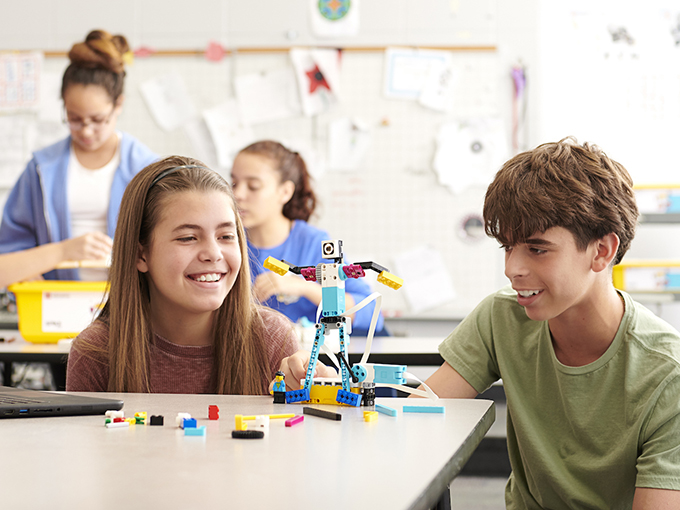Fewer than one in five students feel “very confident” learning science, technology, engineering, art and math subjects, but this would increase with more hands-on learning according to a new report from LEGO Education and New York-based market research firm Harris Insights & Analytics.
According to the study of 5,002 students ages five to 18, 5,001 parents and 1,152 teachers across the US, China, Germany, Russia and Japan, the majority of both teachers (95%) and students (89%) agree that hands-on lessons bolsters confidence in STEAM subjects.
But while teachers and students would prefer a hands-on approach, it’s a challenge for many school systems. In the US, for example, respondents said a lack of time (61%) and curriculum restrictions (47%) were their top barriers. (The study does not ask teachers about curriculum budgets for STEAM learning.) Forty-one percent of teachers globally say hands-on learning isn’t typical at their schools, and only 40% say their students get generous daily time for these types of lessons.
Looking at STEAM-based job prospects, nearly 80% of teachers are concerned that their students lack the practical skills required to succeed in the space, and 81% of parents wish their children learned computer programming at school. The new research comes as the STEM and STEAM-related job market is expanding rapidly. According to market research firm Frost & Sullivan, the global online educational technology market is forecast to be worth US$40.9 billion by 2022. And 3M’s 2018 State of Science Index found that 92% of adults globally want their kids to know more about science.
For students confident in learning STEAM subjects, 82% say they feel overall confidence in school and 87% of students in general say they retain information longer when they learn through hands-on projects.
Despite the positive elements of STEAM learning, 45% of students confident in STEAM still feel nervous when trying new things in school and nearly half of students avoid subjects where they have previously failed. The majority (90%) of teachers, though, say students need to learn to fail to build their confidence in school and 87% say failure is part of the learning process.
To help address this educational gap, LEGO Education is rolling out a new offering called Spike Prime. The product combines physical and digital aspects of play with LEGO bricks, sensors, motors and an intelligent hub. Kids build a creation using the materials then use the Spike app to bring them to life using Scratch-based coding. There are also cross-curriculum lesson plans for teachers to bring the new toy into classrooms. It is available for pre-order now on LEGO’s website for US$325.95 and will begin shipping in August, though LEGO has not indicated whether there will be discounts of funding programs in place for schools and teachers.
The complete Harris and LEGO study can be accessed at theharrispoll.com.























